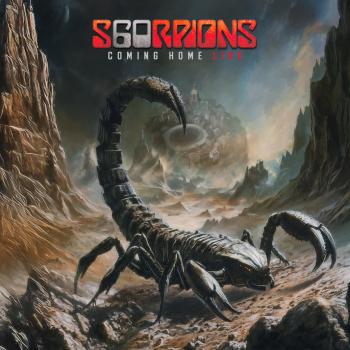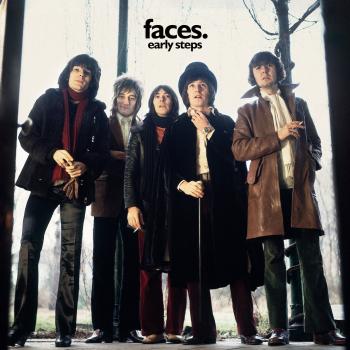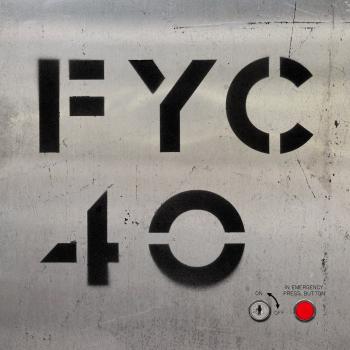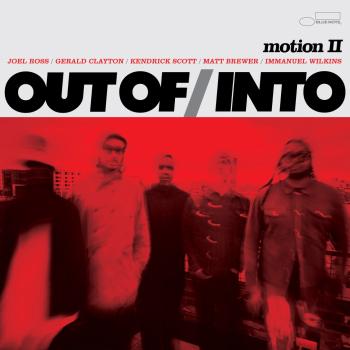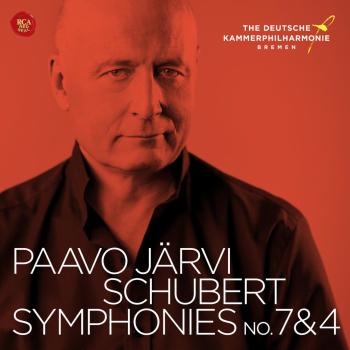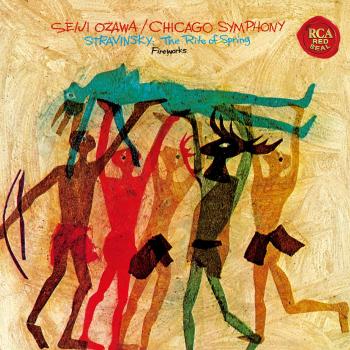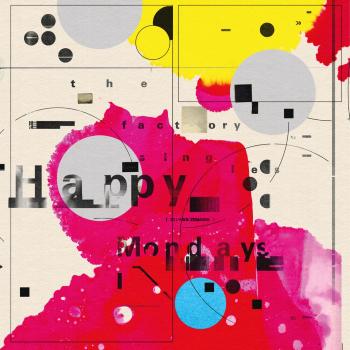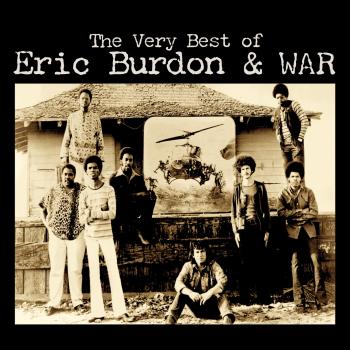
I Long To See You Charles Lloyd & The Marvels
Album Info
Album Veröffentlichung:
2016
HRA-Veröffentlichung:
09.02.2016
Das Album enthält Albumcover
Entschuldigen Sie bitte!
Sehr geehrter HIGHRESAUDIO Besucher,
leider kann das Album zurzeit aufgrund von Länder- und Lizenzbeschränkungen nicht gekauft werden oder uns liegt der offizielle Veröffentlichungstermin für Ihr Land noch nicht vor. Wir aktualisieren unsere Veröffentlichungstermine ein- bis zweimal die Woche. Bitte schauen Sie ab und zu mal wieder rein.
Wir empfehlen Ihnen das Album auf Ihre Merkliste zu setzen.
Wir bedanken uns für Ihr Verständnis und Ihre Geduld.
Ihr, HIGHRESAUDIO
- 1 Masters Of War 08:03
- 2 Of Course, Of Course 06:02
- 3 La Llorona 06:00
- 4 Shenandoah 06:21
- 5 Sombrero Sam 07:29
- 6 All My Trials 05:01
- 7 Last Night I Had The Strangest Dream 04:48
- 8 Abide With Me 01:22
- 9 You Are So Beautiful 06:03
- 10 Barche Lamsel 16:25
Info zu I Long To See You
Vocal-Gaststars Norah Jones und Willie Nelson machen das neue Blue-Note-Album von Saxophonist und Flötist Charles Lloyd zum Ereignis weit über die Jazz-Szene hinaus! Lloyd ist ein unumstrittener Star des internationalen Jazz, und das obwohl er mit seiner ganz eigenen Mixtur aus Modern Jazz, Spiritueller Musik, Rock und Folk niemals laute Töne anschlägt. Musik mit Seele setzt sich doch gegenüber weitverbreitetem Gleichklang durch.
Legendär war schon immer die Experimentierlust des inzwischen 77-Jährigen. Glücklicherweise bedeutet diese keine „anstrengenden Klänge“ wie bei manchem Kollegen, sondern auch im Falle des neuen Albums „I Long To See You” tiefenentspannte, vielschichtige Jazz-Sounds mit einer gesunden Dosis Folk, Rock und Country. Sein neues Ensemble nennt Charles Lloyd stolz “The Marvels”, und der Sound des Quintetts ist wirklich marvelous, nicht zuletzt durch die unverwechselbar fließenden Klangflächen von Gitarrenlegende Bill Frisell.
'Ich suche immer noch nach neuen Klängen', meinte Charles Lloyd, als er letztes Jahr sein Album 'Wild Man Dance' vorstellte, mit dem er eine neue Schaffensphase bei Blue Note einläutete. 'Der Weg ist für mich das Ziel. Ich nenne mich selbst einen 'Klangsucher'. Je tiefer ich in den Ozean der Klänge eintauche, desto mehr wird mir bewusst, dass ich immer noch tiefer und weiter tauchen muss.' Und was wäre besser, als sich bei seinen Tauchgängen nach neuen Klängen mit neuen Partnern zu umgeben, die ihn in noch unerforschte Tiefen und Weiten zu locken verstehen. Genau das hat der Saxophonist, der am 15. März 2016 78 Jahre alt wird, auf seinem zweiten Blue-Note-Album 'I Long To See You' getan. In seine neue Band, die er passend The Marvels taufte, holte er sich gleich zwei namhafte Gitarristen, die sich optimal komplementieren: den großartigen Bill Frisell und Greg Leisz, einen Meister der Pedal-Steel-Gitarre. Zur Seite stellte er ihnen mit Bassist Reuben Rogers und Schlagzeuger Eric Harland allerdings zwei Musiker, die man schon von vielen Lloyd-Aufnahmen der letzten zehn Jahre kennt. Außerdem lud er zwei überraschende Gastvokalisten ein: Norah Jones lieh Billy Prestons 'You Are So Beautiful' ihre Stimme und Willie Nelson interpretiert Ed McCurdys Antikriegslied 'Last Night I Had The Strangest Dream'.
So exquisit wie die Band ist auch die Kollektion der Songs von 'I Long To See You'. Neben den beiden bereits genannten Stücken enthält sie noch Bob Dylans 'Masters Of War' sowie ein paar traditionellen Hymnen und Lieder ('La Llorona', 'All My Trials', 'Abide With Me' und 'Shenandoah'). Neu eingekleidet hat Lloyd aber auch frühere Eigenkompositionen wie das Stück 'Of Course, Of Course', das der Saxophonist 1965 ursprünglich mit Gábor Szabó, Ron Carter und Tony Williams eingespielt hatte. Oder die unvergesslich melodische Nummer 'Sombrero Sam', die er erstmals 1966 mit Keith Jarrett, Cecil McBee und Jack DeJohnette für das Kultalbum 'Dream Weaver' aufnahm. 'Diese Sücke haben meinen Werdegang markiert, und diese Band wirft nun ein aufregendes neues Licht auf sie.' Ausklingen lässt Lloyd das Album mit dem epischen Stück 'Barché Lamsel', das nach einem buddhistischen Gebet benannt ist, mit dem um die Beseitigung von Hindernissen - äußeren, inneren und auch geheimen - gebetet wird. 'Der Titel des Stücks ergab sich wie von selbst während der Aufnahme', verrät dre Saxophonist. 'Mir schien, dass einfach nichts den Fluss der Noten und Ideen aufhielt. Es ist ein Gebet für den Frieden, eine Sutra für die Zärtlichkeit.'
Charles Lloyd
was born in Memphis, Tennessee, on March 15, 1938. Like New Orleans, 400 miles to the south on the Mississippi, Memphis has a rich river culture and musical heritage saturated in blues, gospel and jazz. Lloyd’s ancestry of African, Choctaw, Mongolian, and Irish reflects a similar rich culture. He was given his first saxophone at the age of 9, and was riveted to 1940’s radio broadcasts by Charlie Parker, Coleman Hawkins, Lester Young, Billie Holiday and Duke Ellington. His early teachers included pianist Phineas Newborn and saxophonist Irvin Reason. His closest childhood friend was the great trumpeter Booker Little. As a teenager Lloyd played jazz with saxophonist George Coleman and was a sideman for blues greats Johnny Ace, Bobby Blue Bland, Howlin’ Wolf and B.B. King.
Classical music also exerted a strong pull on the young Lloyd. In 1956 he left Memphis for Los Angeles to earn a degree in music at USC where he studied with Halsey Stevens, a foremost Bartók authority. While his days were spent in academia, Lloyd spent nights getting educated on the job in L.A.’s jazz clubs, playing with Ornette Coleman, Billy Higgins, Scott La Faro, Don Cherry, Charlie Haden, Eric Dolphy, Bobby Hutcherson and other leading west coast jazz artists. He also was a member of the Gerald Wilson big band.
In 1960 Lloyd was invited to become music director of Chico Hamilton’s group when Dolphy left to join Charles Mingus’s band. The Hungarian guitarist Gabor Szabo and bassist Albert “Sparky” Stinson soon joined Lloyd in the band. Hamilton’s most memorable albums for Impulse Records, Passin’ Thru and Man from Two Worlds, featured music arranged and written almost entirely by Lloyd, and during this period of prolific composing he was also finding his unique voice as a saxophonist. A memorable collaboration took place between Lloyd and the Nigerian master drummer Babatunde Olatunji, with whom the saxophonist played when he wasn’t on the road with Hamilton.
Lloyd joined the Cannonball Adderley Sextet in 1964, and performed alongside Nat Adderley, Joe Zawinul, Sam Jones and Louis Hayes. He remained with Cannonball for two years, and to this day continues to acknowledge the important role Cannon played in his own development as a leader. In 1964 Lloyd signed with CBS Records and began to record as a leader. His Columbia recordings, Discovery, (1964) and Of Course, Of Course, (1965) featured sidemen including Roy Haynes and Tony Williams on drums, Richard Davis and Ron Carter on bass, Gabor Szabo on guitar and Don Friedman on piano, and led to his being voted Downbeat Magazine’s “New Star.” Of Course, Of Course was reissued on Mosaic Records in 2006.
Lloyd left Cannonball Adderley in 1965 to form his own quartet, a brilliant ensemble that introduced the jazz world to the talents of pianist Keith Jarrett, drummer Jack DeJohnette and bassist Cecil McBee. Their first release together was a studio recording, Dream Weaver, followed by Forest Flower: Live at Monterey, (1966). Forest Flower made history as one of the first jazz recordings to sell a million copies, and the album’s firsts continued as it became a stunning crossover success that appealed to popular, mass market, audiences and gained heavy airplay on FM radio. The Quartet was the first jazz group to appear at the famed Fillmore Auditorium in San Francisco and other rock palaces and shared billing with Jimi Hendrix, Janis Joplin, Cream, the Grateful Dead and Jefferson Airplane.
In 1967 Charles Lloyd was voted “Jazz Artist of the Year” by Down Beat, and the Quartet was invited to tour the world. The Charles Lloyd Quartet found a warm reception in Europe at the new jazz festivals in Montreux, Antibes, and Molde. Its performances in the Far East, the Soviet Union and the Eastern Bloc nations of Europe often marked the first time these audiences had heard an American jazz group live.
Credited by many musicians with anticipating the World Music movement by incorporating cadences of many cultures in his compositions as early as the late 1950s, Charles Lloyd describes his music as having always “danced on many shores.” From the moment he first came to prominence as the young music director of the Chico Hamilton Quintet in 1960, Lloyd began to take audiences on journeys that traversed enormous distances. Over nearly five decades, his compositions have punctuated the post-bop period, embraced the traditional music of a host of world cultures and enlivened the psychedelic 1960s with avant-garde improvisation.
Lloyd was one of the first jazz artists to sell a million copies of a recording: Forest Flower’, and then he surprised the music world by walking away from performing just at the point that he was dubbed a jazz superstar. Actually he was just following a trajectory that was taking him closer to the essence of the music he was hearing.
At the peak of the Cold War in 1967, Lloyd made headlines when his Quartet became the first jazz group from the U.S. to play in the USSR by invitation of the Soviet people rather than through government sponsorship. Its first stop was Tallinn and subsequent concerts took place in Leningrad and Moscow. He was the first jazz musician to perform at the classical music festival in Bergen, Norway.
The Charles Lloyd Quartet was the first jazz group to perform at the legendary Fillmore Auditorium in San Francisco. The acoustic group fused virtuoso improvising with a constantly changing combination of musical tropes, incorporating the challenge of avant-garde or “free jazz” with elements of non-Western music, impressionistic harmonies and occasional rock rhythms in open-ended musical flights that echoed the free spirit of the psychedelic 1960s. Electric jazz/rock germinated in a series of original performances that, ironically, were acoustic. He was invited to guest on recordings with the Doors, the Birds, The Grateful Dead, Ashish and Pranesh Khan, and the Beach Boys. Miles Davis and other jazz figures were highly influenced by Lloyd’s explorations and soon plugged in to play for the young fans that Lloyd had reached through his acoustic outings.
At the height of his career in 1970, Lloyd disbanded the quartet and dropped from sight, withdrawing to pursue an inner journey in Big Sur, the wild haven that had previously attracted other artists and seekers including Robinson Jeffers, Langston Hughes, Henry Miller, Lawrence Ferlinghetti, Jack Kerouac, Jean Varda and Jamie DeAngulo.
Despite recording several albums during the 1970s and occasionally appearing as a sideman with various rock groups, he practically disappeared from the jazz scene. During the 1970s Lloyd played extensively with The Beach Boys both on their studio recordings and as a member of their touring band. In the late 1970s Lloyd was a member of Celebration, a band composed of members of the Beach Boys’ touring band as well as Mike Love and Al Jardine. Celebration released two albums.
It wasn’t until 1981 that Lloyd moved to break a decade of silence in the jazz world when a remarkable 18-year-old French pianist, Michel Petrucciani, arrived in Big Sur. Lloyd was compelled to help introduce this gifted artist to the world. This led to U.S., European and Japanese tours in 1982 and 1983 with Petrucciani on piano, Palle Danielsson on bass and drummer Son Ship Theus. British jazz critic Brian Case called Lloyd’s return “one of the events of the 1980s.” The group produced a special edition cassette, Night Blooming Jasmine, and two live records, Montreux ’82’and A Night in Copenhagen, which also features Bobby McFerrin (reissued by Blue Note Records). Satisfied that Petrucciani was beginning to receive the recognition he deserved, Lloyd again retreated to Big Sur.
In 1986, after being hospitalized with a nearly fatal medical condition, Lloyd rededicated himself to music. When he regained his strength in 1988 he formed a new quartet with the renowned Swedish pianist Bobo Stenson. When Lloyd returned to the Montreux Festival in 1988, Swiss critic Yvan Ischer wrote: “To see and hear Charles Lloyd in concert is always an event, not only because this saxophonist has been at quite a few crossroads, but also because he seems to hold an impalpable truth which makes him a thoroughly original musician…This is what we call grace.”
Lloyd made his first recording for ECM Records, “Fish Out of Water” in 1989. The project marked the beginning of a new wave of Lloyd compositions and recordings. ECM’s producer, Manfred Eicher, compared the recording to a Giacometti painting, saying, “I really believe this is the refined essence of what music should be. All the meat is gone, only the bones remain.” More than twenty years later, he is still with the label, and still in search of the “sound” and the truth. From 1989, Lloyd toured actively and recorded for the ECM label. Noteworthy albums include “Canto,” “Voice In the Night,” “The Water Is Wide,” featuring Brad Mehldau, John Abercrombie, Larry Grenadier and Billy Higgins, “Lift Every Voice,” (featuring Geri Allen), and the live “Rabo de Nube” with Jason Moran, Reuben Rogers and Eric Harland. This group became known at the New Quartet rivaling his original quartet with Keith Jarrett.
Charles Lloyd brought great consistency and creativity to his period with ECM, much of his music containing a strong spiritual and world music element, as can be heard on the duo recording “Which Way Is East” with his longtime friend and musical soul mate, Billy Higgins. “Rabo de Nube”, captured the New Quartet “live” at its inception, and was voted #1 recording for the 2008 Jazz Times Reader’s and Critic’s Poll. “Mirror,” his second recording with the New Quartet, (2010) has already been called a “Charles Lloyd classic.”
Lloyd established another “first” in his interesting history of jazz “firsts”, by collaborating with the classical Greek singer, Maria Farantouri for a concert at the Herodion Theater at the foot of the Acropolis. Ta Nea, the leading newspaper of Athens stated “Music has no borders…. The audience was filled with a Dionysian ecstasy. While the music had reminiscences of a Hypiros fair, at the same time it took you to the heart of New York City.” The “ATHENS CONCERT” was released by ECM records in 2011.
In 2013 Lloyd was commissioned by Jazztopad in Wroclaw Poland to write a new composition to premiere at their festival. The “Wild Man Dance Suite” is a masterpiece composed for a quartet of piano, bass, and drums along with the Hungarian cimbalom and Greek lyra. The recording “Wild Man Dance” was released to great critical acclaim on Blue Note Records in April 2015. More recently, Jazztopad commissioned him again, in 2017, this resulted in his multi-media piece “Red Waters, Black Sky.”
“Charles Lloyd & the Marvels, I Long To See You,” features a new group with guitarist, Bill Frisell, Reuben Rogers, bass, Eric Harland, drums and Greg Leisz, on steel guitar. It also has Willie Nelson and Norah Jones as special guests on two tracks. The album was released in January of 2016. They released “Vanished Gardens” with special guest Lucinda Williams in 2018, also on Blue Note.
Charles Lloyd maintains an active performance and recording schedule with the New Quartet, Sangam, Maria Farantouri, The Marvels and special projects around the world. He celebrated his 75th birthday with concerts in the Temple of Dendur at the Metropolitan Museum and the Kennedy Center Concert Hall. Lloyd and Jason Moran were commissioned by Alonzo King’s Lines Ballet to compose the score for a new ballet, “Azoth” which had its world premiere in October 1, 2019.
Charles Lloyd, who turned 80 in March 2018, was awarded the prestigious honor of “Chevalier des Arts et Lettres” by the French Minister of Culture in August 2019. At 82, Lloyd remains a vital and creative force in the world of music and arts. In 2020 Blue Note Records released “Charles Lloyd, 8, Kindred Spirits” a limited edition box set of the concert along with a 96 page book of photographs, 4 LPs and a DVD of the entire concert performance. His newest recording the sixth for Blue Note Records is “Tone Poem” (2021) and once again, features the Marvels.
Dieses Album enthält kein Booklet

